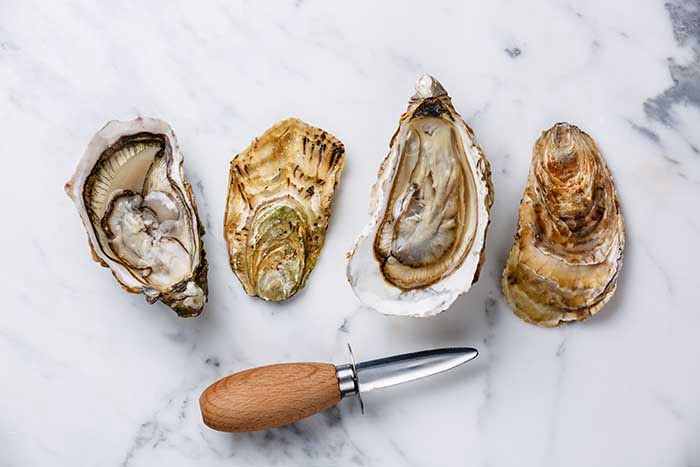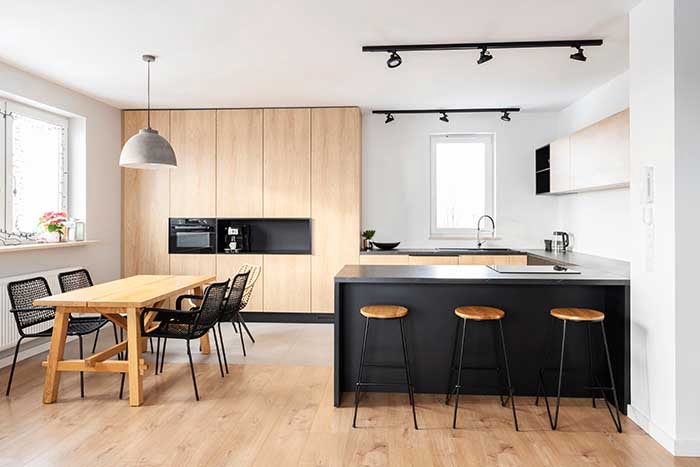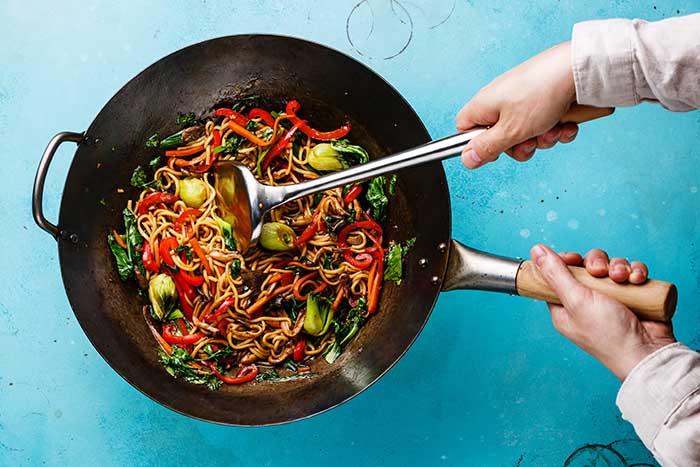Kitchen slow juicers offer the best way to squeeze juice, extracting more flavors and nutrients than other home appliances. Find your shortcut to homemade cold-pressed juice with our guide to the best slow juicers.
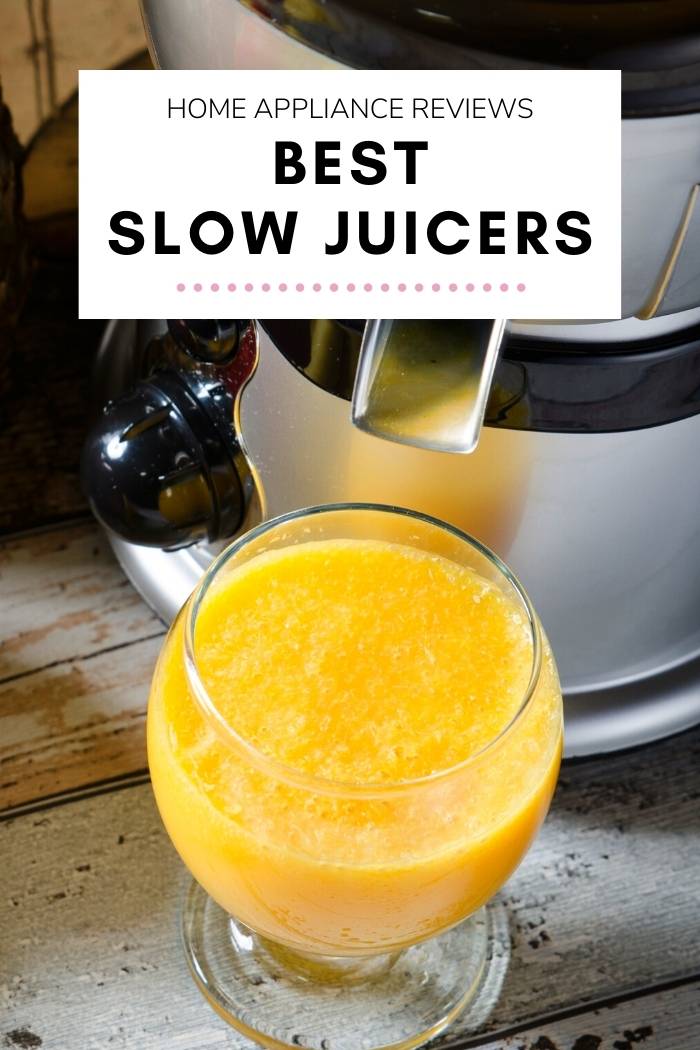
Juicers have quickly become a key addition to many kitchens over the years, and rightfully so! At the top of the throne sits slow juicers, which have a far greater yield potential than any other type of juicer. Whether it’s a smoothie or morning fruit juice, slow juicers produce tastier and healthier juice every time.
But where to start? We’ve handpicked five of the best slow masticating juicers out there today for all budgets and needs. Let’s get into it.
Breville Juice Fountain Plus
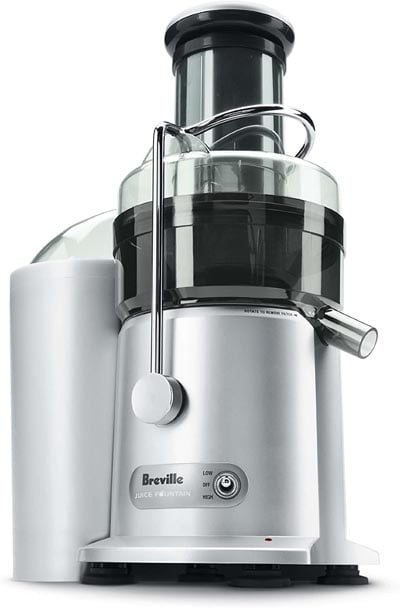
The Breville Juice Fountain Plus is suitable for people who want a higher yield of juice, or for people who are juicing whole fruit. It’s a robust masticating juicer that won’t break down over time when consistently put to use.
Its 3-inch extra-wide feeder chute means you can cram more ingredients in, cutting down prep time. The filter basket is easy to assemble with the parts fitting together seamlessly, creating a leak-proof seal. Furthermore, it’s dishwasher safe.
It may take a little while before your drinks come out but this machine will do all the hard work for you until then.
With 850 watts of power, it can do the tasks that you need without any struggle. It comes with a jug to collect the juice and hold about one liter or thirty four ounces.
- The Breville Juice Fountain Plus is the perfect way to get yourself into the world of juicing; This...
- UNIQUE EXTRACTION SYSTEM: The Breville juicers titanium reinforced disc and Italian-made micro mesh...
- SHORT PREP TIME: The juicers unique 3 inch extra wide chute feed allows you to juice whole fruits...
Kuvings Whole Silver B6000S
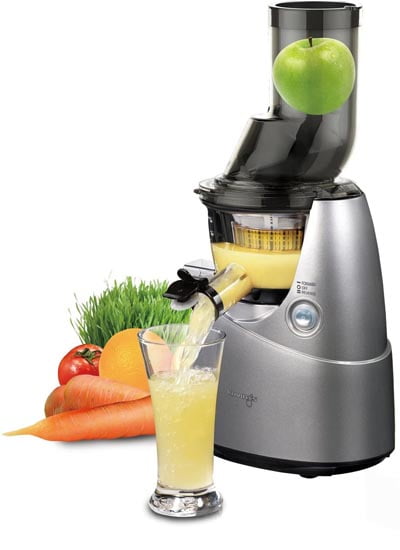
With a 240-Watt motor, this juicer is relatively quiet. It also has a three-inch wide feeding tube which is useful because it takes whole fruits such as apples and pears, for example, without any need to cut them up first. This saves time and preserves the juice in perfect condition. It comes with a strainer designed for making frozen fruit sorbet and a cleaning tool to help keep the strainer in pristine condition. Smart, vertical shape, available in silver, red or white. Quiet juicer with an elegant design.
- Easily accommodate whole produce items reducing prep and processing time up to 40%.
- 240W Heavy-duty motor with less noise and vibration.
- Low-speed masticating technology yields juice that's richer in antioxidants and vitamins.
Panasonic MJ-L500
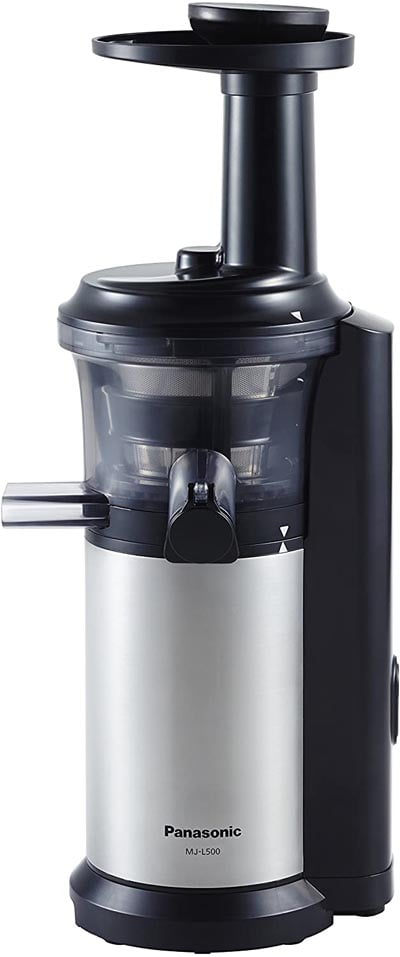
This slow juicer is 17 inches tall and has a slim design. It may not fit very easily into some kitchen spaces because of its height. It looks very nice, though, and so having it on display in your kitchen is quite a good idea. The 290-Watt motor spins at 65 RPM and is relatively quiet during use. The juicer is very easy to clean since it comes apart and the external casing can simply be wiped with a damp cloth. There is a neat little attachment for adding frozen items. Requires a little effort to cut the fruit and vegetable to size. Altogether then, a quietly efficient slow juicer that can cope with a wide variety of ingredients.
- Powerful slow juicer preserves nutrients from fruits and vegetables
- Easily processes fruits, vegetables, leafy greens, wheatgrass, nuts, and soy to make a variety of...
- Slow compression prevents juice discoloration, separation and while maintaining flavor and vitamins
Omega Slow Vertical Masticating Juicer
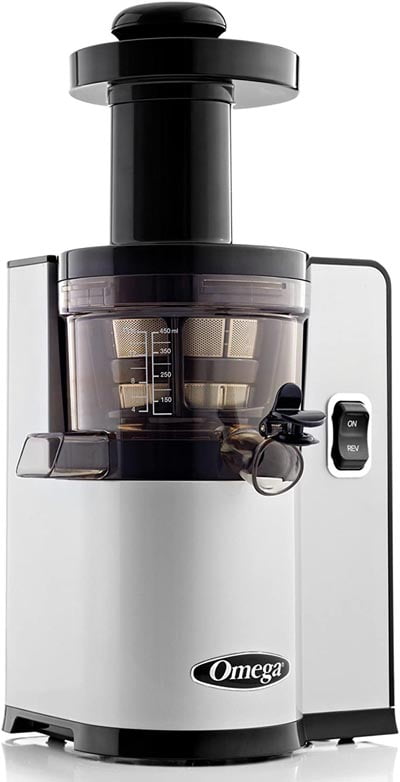
This juicer has a compact shape, measuring only 14.4 inches at its highest point. It is quite heavy and has a motor that operates at 80 RPM in order to guarantee slow juicing quality. There is a wide opening at the top, but the feeding tube itself is rather narrow. Fruit and vegetables have to be chopped, therefore, before they will fit in the tube. There is an auto-cleaning system that expels the pulp but you will still need to wash the removable parts thoroughly. These parts are dishwasher safe, however, and so this is not such a difficult chore. The weight of this machine means you might prefer to store it on a worktop, or in a low cupboard, rather than a high shelf. It looks neat, though, and will not take up too much space.
- Cold Press Slow Juicer: This juice maker machine operates at a slow 43 RPM and uses gentle squeezing...
- Max Flavor & Nutrients: This electric juicer uses Slow Squeezing Technology (SST) to extract the max...
- High Yield: Equipped with a dual-edge auger with a tighter fit tolerance, this fruit juicer machine...
SKG New Generation Slow Masticating Juicer
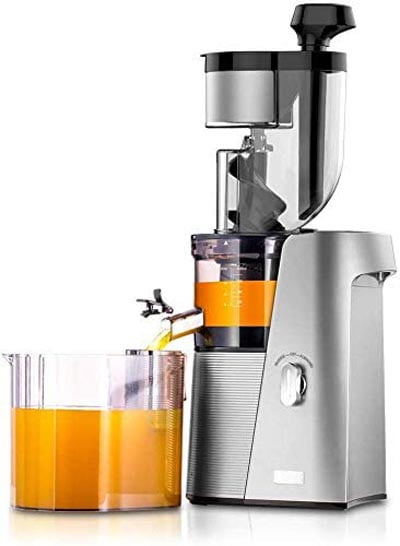
This is one of the larger juicers, at a whopping 22 inches high and weighing 19.4 pounds. One of its most useful features is a carrying handle which helps greatly when moving and cleaning the machine. The feeding tube is a very accommodating 3 inches in width, which is large enough to take many items whole. The 240-Watt motor has a low RPM of just 60 RPM and this makes for high quality juice. You can even purchase extra accessories. This is a solid and capable juicer. It is quite heavy but the clever design and handle make it surprisingly easy to use.
- WIDE 3.15” TURN OVER CHUTE –The A10’s flip over 3.15” (80mm) opening allows for large fruits...
- BETTER TASTING AND MORE NUTRITIOUS JUICE – Using a slow masticating juicer like the SKG Large...
- MORE JUICE FOR PULP LOVERS AND HATERS ALIKE - The SKG Large Caliber Juicer produces more juice than...
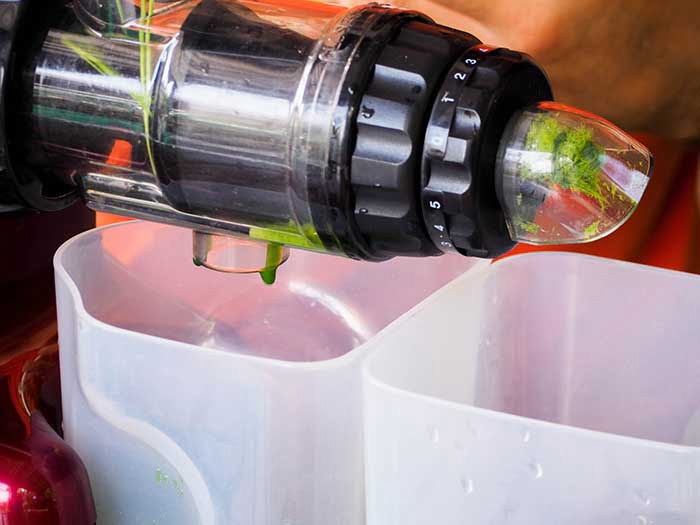
What is a slow juicer?
A slow juicer is a kitchen appliance that extracts juice from either fruits or vegetables. It does this by crushing them slowly but surely. In most cases, you will find it as a vertical or a horizontal juicer. It’s about more than just the speed of the juicer, but what it can do for you. They are also known as cold press juicers or vertical masticating juicers.
Think about what happens when you squash vegetables or fruit by hand and get some juice. Only now, you get some help from a slow juicer. They use a single gear or more, depending on the type of juicer that you’ll get. It also uses a slow rotation process amongst other processors to get the juice out.
Slow juicers extract more of the natural product than centrifugal juicers. They leave a bit of the pulp in. The juice is not over blended, so the vegetables and fruits maintain a lot of natural goodness. Another advantage of these is that they are quiet, so if noise is a concern for you, this will tick one of your boxes. The other benefit is that they make juices that have a longer shelf life.
It’s not just about power, however. Slow juicing is designed to chew and grind, sometimes called “masticating” because this action breaks up the plant fibers but preserves the valuable juice intact. There is no heat involved, and the pressing is more efficient when the contents are already broken down into a pulp. It’s a good idea to check that the juicer is called a “slow juicer” or “masticating juicer”. Have a look too, at the way the parts fit together, and see how easy it is to clean the components after use.
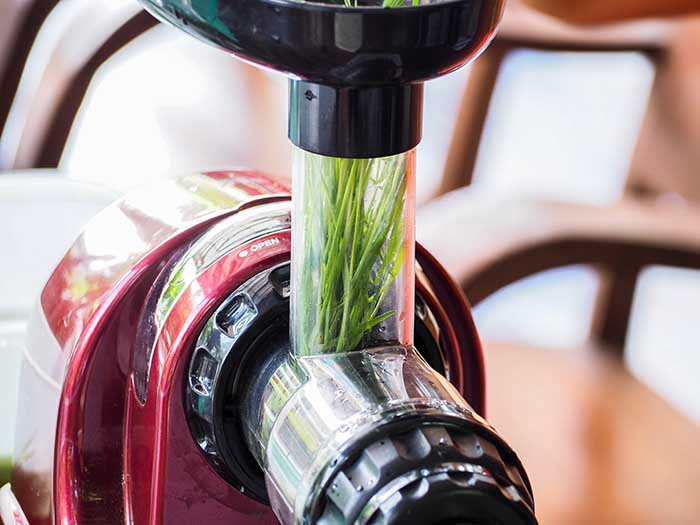
How do slow juicers work?
Slow juicers are also known as Mastication juicers. They use two stages to break down food. The process of mastication is the extraction of juices from vegetables or fruits by crushing them. It refers to grinding as well, using a mechanism of teeth. In simple terms, it is chewing. In the context of chewing, we use our teeth to break food down and form a ball with saliva so that we can easily swallow. A masticating juicer replicates this process for you, thereby making it easy to get the juice out of the fruits and vegetables and chop them into tiny bits.
A slow juicer crushes the food at between 80 and 100RPM. Food is crushed at this slow juice speed, and the juice is extracted, all while preserving nutrients more nutrients than when you use a centrifugal juicer. This is partly because there is no heat or oxygen in the mix, as you would find with a centrifugal juicer.
Important features
The power of the motor is a key factor to consider when buying a slow juicer. This is measured in Watts and revolutions per minute (RPM) and it gives you an idea how fast and efficiently the juicer will process the food. Fast is not necessarily better! Remember, we are looking for a juicer that preserves the quality of the juice and slow motors are better in this respect. Look out, too, for the level of noise that the motor makes when juicing. This can really have an impact on your motivation to make those healthy juices, and so it is best to check out just how loud each juicer will be in actual use. You can do this by reading reviews and comparing motor specifications.
Juice yield
Juice yield does not just refer to the amount of juice. It also refers to the type of juice. Consider how much pulp you want in your juice, as well as the consistency that you want. This will guide you to get the juicer with the setting that gives you the desired result. If you want a lot of dry pulp, a slow juicer will work well for you. think about why you are juicing and the consistency you are looking for. On average, a slow juicer will produce about 30 % more juice than other types of juicers.
Motor power
You also want to look at the size of the motor and the amount of power that It has. This will do well, especially with leafy green vegetables. However, they do differ by brand and make. Even then, the average is about 200 watts, up to 400 watts. This is almost half or more of what is required to power a centrifugal juicer.
Speed of the juicer
A good slow juicer should have about 100 RPM. A centrifugal juicer, on the other hand, is much faster and runs up to 24 000RPM. The lower the RPM on the juicer, the more efficient it will be to extract the most juice and give you a decent amount of pulp. Ensure that it suits the way you live and the amount of time you usually have to make your juice.
Size of the juicer
You need to know what amount of juice you can expect from a certain number of fruits or vegetables. This way, you can plan your recipes accordingly. It also lets you know how many glasses you can get out and how much time you can save by putting a certain amount of fruit or vegetables in it.
Feed chute opening width
The width of the chute should be wide enough to allow the juice and the pulp produced to be poured into a glass with no issues.
Noise
The quieter it is, the better. Centrifugal juicers are notorious for being much noisier than slow juicers.
Ease of cleanup
Juicing can be a messy business. Make sure that you get the guide from the manufacturer that shows you how to clean it. The easier it is to set up and take apart, the better. It means that you will be able to clean the individual parts better.
Construction and design
You should check out the materials that the juicer is made of and its dimensions in relation to the space you have in your kitchen. Some juicers are large or heavy, with many solid metal parts and a lot of accessories. They can take up a lot of space vertically, or horizontally, depending on the design. Others are smaller, lighter, and easier to fit into your cupboard or worktop space. And of course the visual impression that the machine makes in your kitchen is also important. Slow juicers come in many different shapes, sizes and shades and there is bound to be one that matches your kitchen décor and personal style.
Slow juicer vs centrifugal juicer
These two have a couple of fo differences that cause people to choose one over the other. The first noticeable difference is that they have different speeds.
Slow juicers are slower than centrifugal juicers. The other difference is that slow juicers deal with leafy greens better than centrifugal juicers. The two juicers also differ in that the slow juicer is quite costly.
The advantages of a slow juicer include that it extracts more nutrients thanks to the slow process it uses. Also, it uses less power and has fewer RPMs. The disadvantages are that it takes up to 3times longer to juice, and it includes a lot of the pulp, which may taste bitter and can also be awkward to swallow.
The advantages of a fast juicer are that it is much quicker, and it can also produce smoother juices with way less detectable pulp. They are also popular because they are easy to clean and they are less costly to buy. However, the disadvantages are that the juice is not as nutrient-dense when it comes from a slow juicer. Also, the high speed forms a lot of foam, and this separates from the juice quite quickly, and it doesn’t have a great shelf life.
Slow juicing vs cold pressing
Slow juicing is the same as cold pressing: the extraction of juice from fruits or vegetables using a hydraulic press. It is separating the fiber of fruit or vegetables from the cells without any heat involved. Both these processes are the same.






